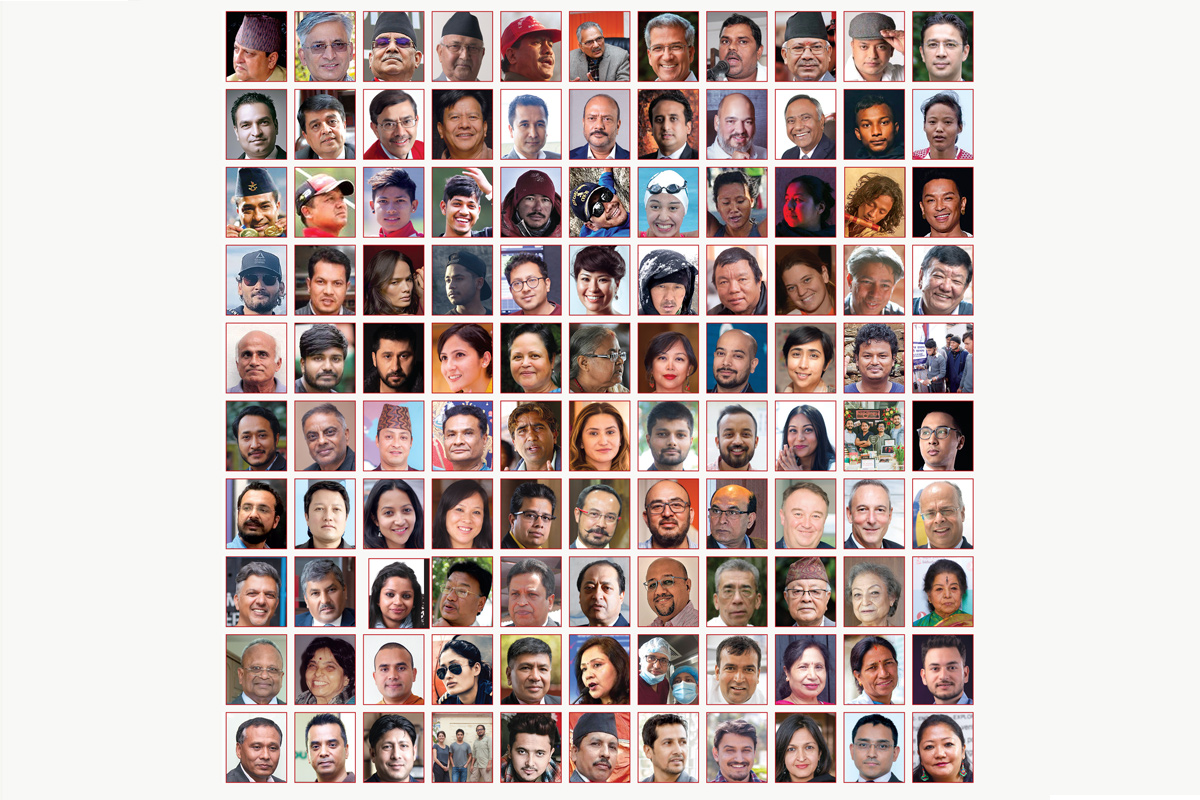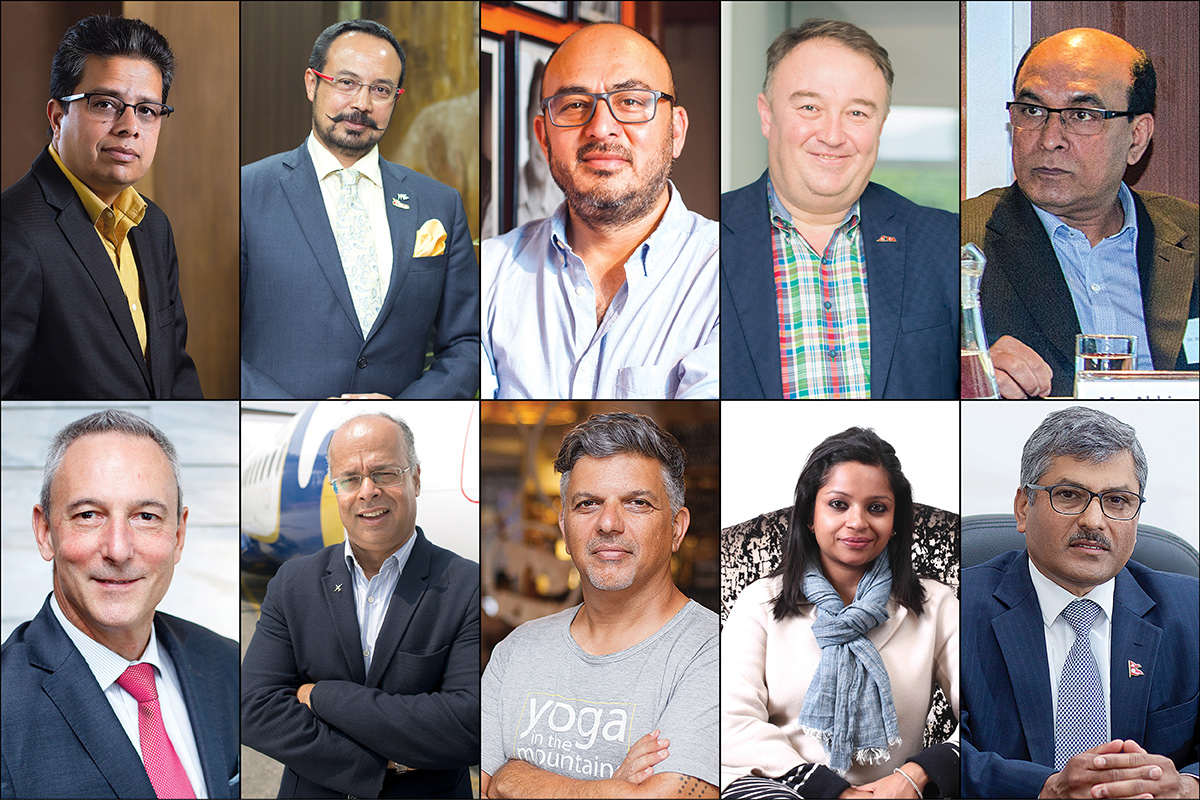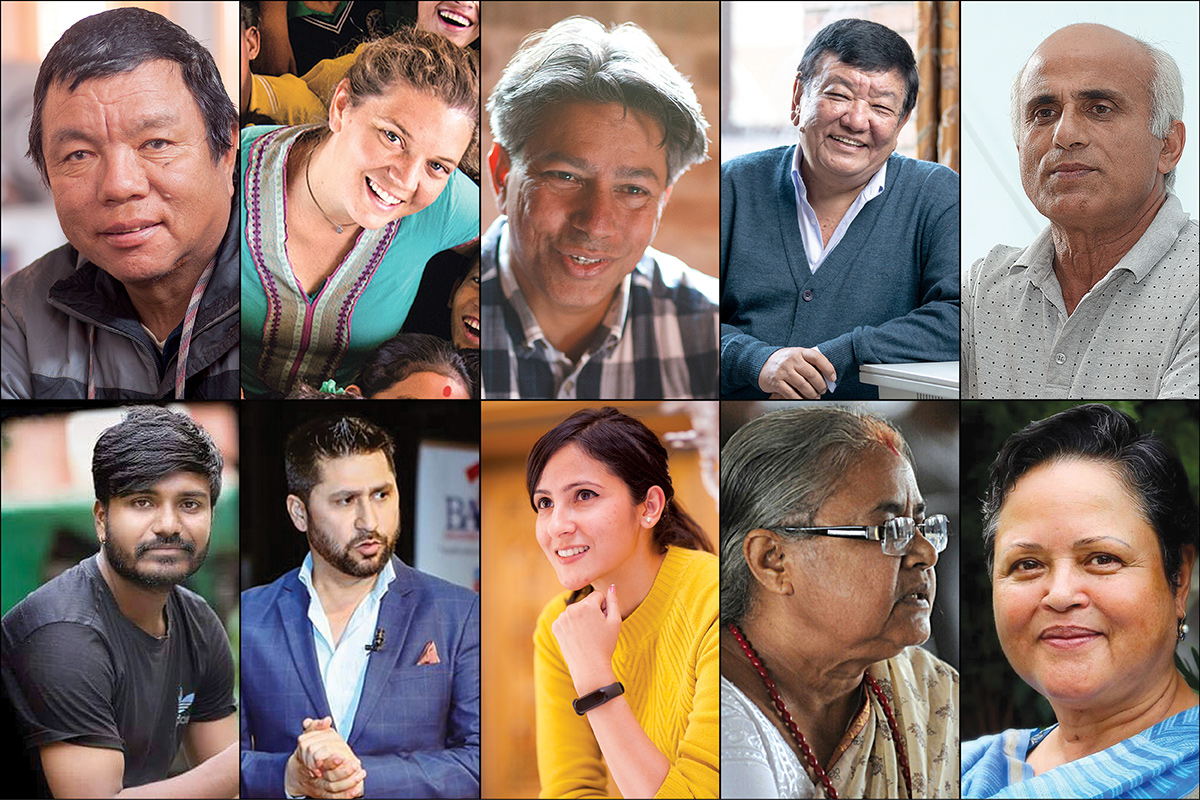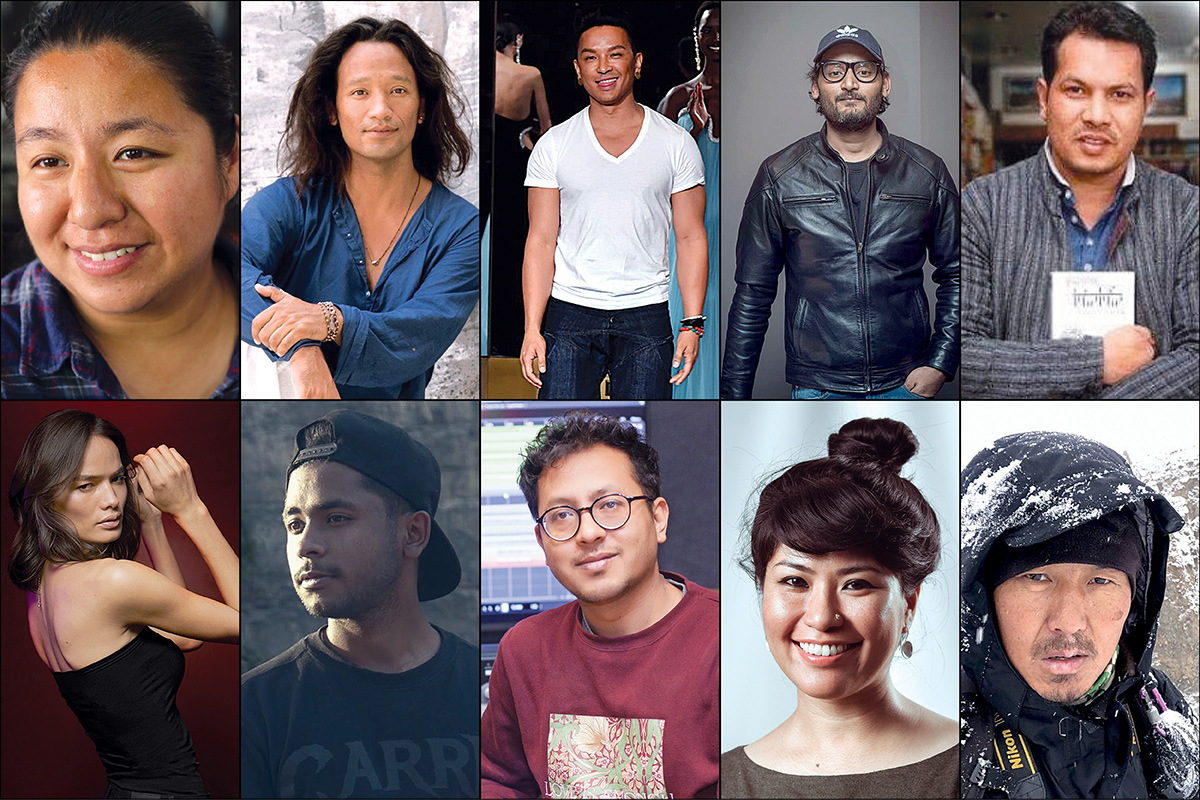
NAYANTARA GURUNG KAKSHAPATI
 NayanTara Gurung Kakshapati is a photographer and curator. She enjoys working across platforms to connect visuals, research, sound, pedagogy, and activism. In 2007, she co-founded photo.circle, a photography platform that has facilitated learning, publishing and audience engagement opportunities for Nepali photographers. In 2010, she co-founded the Nepal Picture Library, a digital photo archive containing over 55,000 images that contribute to the study of Nepali photography and raises questions about memory, identity, and the history of the region through images. Kakshapati’s work has been exhibited internationally including at Photo Phnom Penh, Cambodia (2015), OBSCURA Festival of Photography, Malaysia (2013), Delhi Photo Festival, India (2013), International Human Rights Film Festival, Switzerland (2013), and Kirkkopuisto Photo Annual, Finland (2013). Kakshapati is the Festival Co-Director of Photo Kathmandu, Nepal’s first international photography festival, which she co-founded in 2015. Adding to her portfolio, she is also a Joop Swart Masterclass 2020 mentor. Recently, she took upon the role of 2021 Photo Contest jury chair in the annual photojournalism contest under World Press Photo.
NayanTara Gurung Kakshapati is a photographer and curator. She enjoys working across platforms to connect visuals, research, sound, pedagogy, and activism. In 2007, she co-founded photo.circle, a photography platform that has facilitated learning, publishing and audience engagement opportunities for Nepali photographers. In 2010, she co-founded the Nepal Picture Library, a digital photo archive containing over 55,000 images that contribute to the study of Nepali photography and raises questions about memory, identity, and the history of the region through images. Kakshapati’s work has been exhibited internationally including at Photo Phnom Penh, Cambodia (2015), OBSCURA Festival of Photography, Malaysia (2013), Delhi Photo Festival, India (2013), International Human Rights Film Festival, Switzerland (2013), and Kirkkopuisto Photo Annual, Finland (2013). Kakshapati is the Festival Co-Director of Photo Kathmandu, Nepal’s first international photography festival, which she co-founded in 2015. Adding to her portfolio, she is also a Joop Swart Masterclass 2020 mentor. Recently, she took upon the role of 2021 Photo Contest jury chair in the annual photojournalism contest under World Press Photo.
MANOSE NEWA
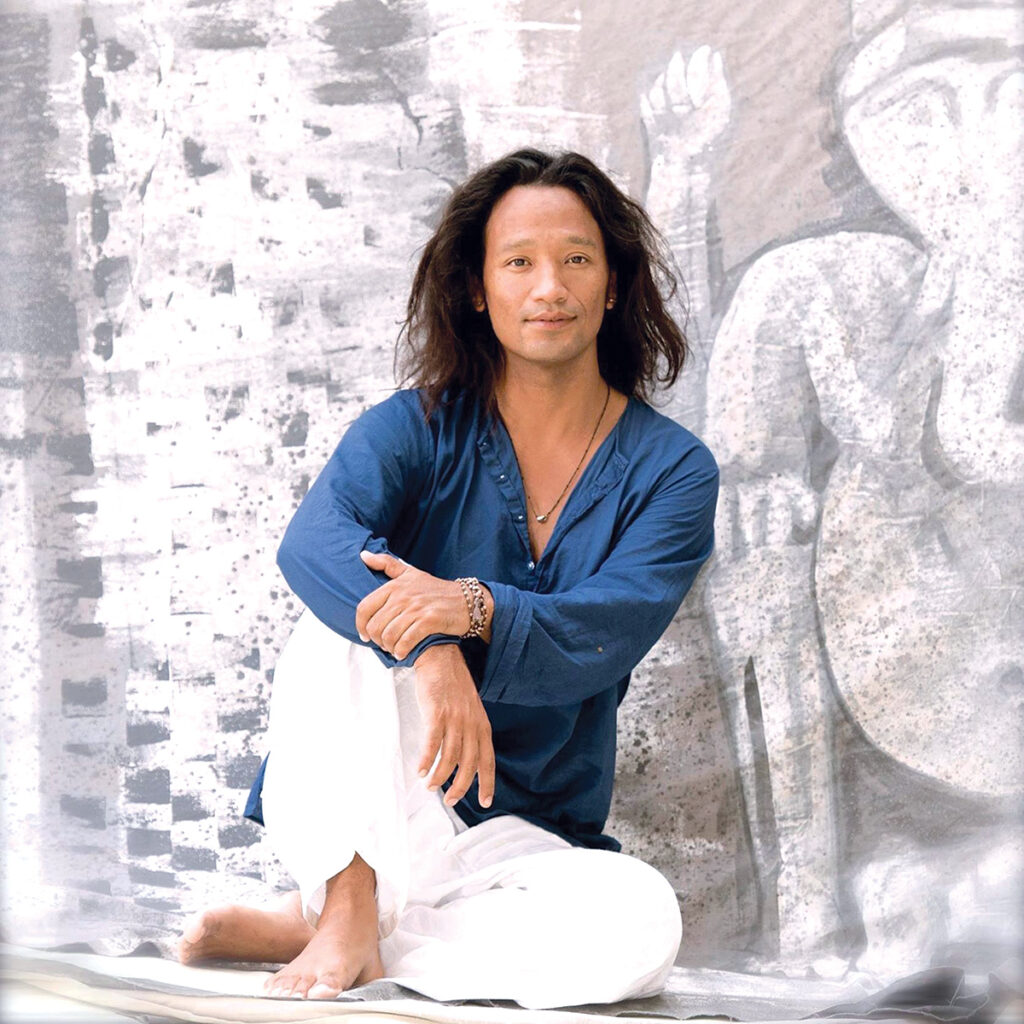 Manose Newa’s love for the bamboo flute or bansuri began when he was enraptured by the beautiful sound at the impressionable age of eight. He describes the day as an out of the world experience where a beautiful sound wafted in through his bedroom window in the silence of the night and entranced him into a possessed state of mind with its soothing melody. Now, he would like to believe that it was Lord Krishna himself playing the flute to entice him into a helpless love for the music. He then began carrying around a two-rupee flute that he bought from a street hawker, and as the years rolled on, his passion for his music only increased. Born and bred in Boudha, Newa started playing the flute inside Boudhanath stupa and at the gates of Pasupatinath temple in Kathmandu before setting out to collaborate with international artists.
Having studied the art of music under the guidance of Guru Mandan Dev Bhatta, it wasn’t long before he was recognised as a child prodigy. At 15, he was named as Nepal’s Instrumentalist of the Year. By 17, he was teaching the art. A number of things happened after that. His first tour took him to Germany and Switzerland, where he tagged along with senior artists. Then he found himself in USA collaborating with different artists to make music before coming back to Nepal for a stint with 1974 AD. He moved to the US, released five solo albums and contributed to Grammy nominated artists and performances all across the globe. He is the first Nepali to accomplish such a feat on the world stage. Today he commands shows across the world, solo and in collaboration, the most recognised being with Deva Premal and Miten who are at the forefront of the burgeoning world-wide chant phenomenon.
Manose Newa’s love for the bamboo flute or bansuri began when he was enraptured by the beautiful sound at the impressionable age of eight. He describes the day as an out of the world experience where a beautiful sound wafted in through his bedroom window in the silence of the night and entranced him into a possessed state of mind with its soothing melody. Now, he would like to believe that it was Lord Krishna himself playing the flute to entice him into a helpless love for the music. He then began carrying around a two-rupee flute that he bought from a street hawker, and as the years rolled on, his passion for his music only increased. Born and bred in Boudha, Newa started playing the flute inside Boudhanath stupa and at the gates of Pasupatinath temple in Kathmandu before setting out to collaborate with international artists.
Having studied the art of music under the guidance of Guru Mandan Dev Bhatta, it wasn’t long before he was recognised as a child prodigy. At 15, he was named as Nepal’s Instrumentalist of the Year. By 17, he was teaching the art. A number of things happened after that. His first tour took him to Germany and Switzerland, where he tagged along with senior artists. Then he found himself in USA collaborating with different artists to make music before coming back to Nepal for a stint with 1974 AD. He moved to the US, released five solo albums and contributed to Grammy nominated artists and performances all across the globe. He is the first Nepali to accomplish such a feat on the world stage. Today he commands shows across the world, solo and in collaboration, the most recognised being with Deva Premal and Miten who are at the forefront of the burgeoning world-wide chant phenomenon.
PRABAL GURUNG
 Prabal Gurung is not a regular fashion designer contained with designing clothes, he frequently displays his political activism streak in his designs. He is vocal when it comes to identity issues of immigrants, also because he is one. He has constantly lent his voice to racial and social justice and equality. He’s sent out models with sashes that ask: “Who gets to be an American?”
Born in Singapore, raised in Nepal and India, Gurung saw fame when he went to the US. He carved his own niche and found fans in Michelle Obama, Oprah, The Duchess of Cambridge, Sarah Jessica Parker, Anne Hathway. Adding to the list is Kamala Harris, Vice President of the United States. The latter wore his design the day after being sworn in.
In 2010 he was the recipient of the Ecco Domani Fashion Fund Award and selected as runner up for the 2010 CFDA / Vogue Fashion Fund. He would go on to win the 2011 CFDA Swarovski Award for Women’s wear. He was even made honorary designer of the Smithsonian’s National Portrait Gallery, a position that had never existed until then.
Gurung has consistently been a champion for Nepal, raising over USD one million when the 2015 earthquake struck, and making it a point to talk about the country in his interviews. Gurung is also the co-founder of Shikshya Foundation Nepal established in 2011.
Prabal Gurung is not a regular fashion designer contained with designing clothes, he frequently displays his political activism streak in his designs. He is vocal when it comes to identity issues of immigrants, also because he is one. He has constantly lent his voice to racial and social justice and equality. He’s sent out models with sashes that ask: “Who gets to be an American?”
Born in Singapore, raised in Nepal and India, Gurung saw fame when he went to the US. He carved his own niche and found fans in Michelle Obama, Oprah, The Duchess of Cambridge, Sarah Jessica Parker, Anne Hathway. Adding to the list is Kamala Harris, Vice President of the United States. The latter wore his design the day after being sworn in.
In 2010 he was the recipient of the Ecco Domani Fashion Fund Award and selected as runner up for the 2010 CFDA / Vogue Fashion Fund. He would go on to win the 2011 CFDA Swarovski Award for Women’s wear. He was even made honorary designer of the Smithsonian’s National Portrait Gallery, a position that had never existed until then.
Gurung has consistently been a champion for Nepal, raising over USD one million when the 2015 earthquake struck, and making it a point to talk about the country in his interviews. Gurung is also the co-founder of Shikshya Foundation Nepal established in 2011.
BIPIN KARKI
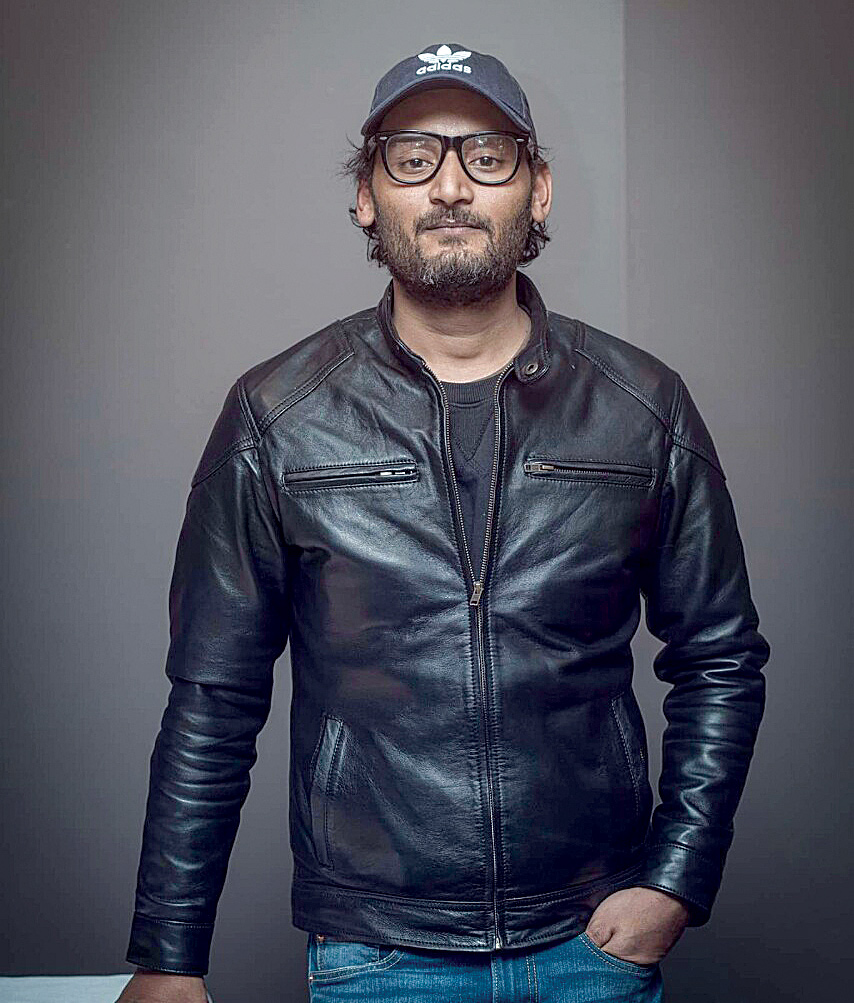 Bipin is one of the leading actors in Nepali cinema known for his sheer versatility. Karki came to acting almost accidentally. He was a literature student at Ratna Rajya Laxmi Campus when he started going to see plays at Gurukul. That was when he knew he wanted to act and so he embedded himself into Gurukul doing odd jobs backstage. He was picked for small roles and as an extra. But it took Deborah Merola of One World Theatre to cast him in his first big role, as Peter for a Nepali adaptation of Eugene O’Neill’s “Desire Under the Elms”.
Bipin Karki’s fame has been almost instantaneous. Seven years ago, he came out of nowhere and now he’s in almost every Nepali film that receives critical appreciation. His breakthrough role was as the raspy-voiced bald-headed Bhasme Don in Dipendra Khanal’s Pashupati Prasad. He won accolades for his uniquely charming portrayal of an aryaghat goon and has since gone on to play a variety of different characters: the dreadlocked Pitle Don in Loot 2, the mohawked Goldie in Naaka, a slow-witted convict in Bhaskar Dhungana’s Suntali, and a straight-laced officeworker in Pratik Gurung and Safal KC’s Hari. He’s akin to a chameleon, changing physical appearance, tone of voice and body language with every new role.
Bipin is one of the leading actors in Nepali cinema known for his sheer versatility. Karki came to acting almost accidentally. He was a literature student at Ratna Rajya Laxmi Campus when he started going to see plays at Gurukul. That was when he knew he wanted to act and so he embedded himself into Gurukul doing odd jobs backstage. He was picked for small roles and as an extra. But it took Deborah Merola of One World Theatre to cast him in his first big role, as Peter for a Nepali adaptation of Eugene O’Neill’s “Desire Under the Elms”.
Bipin Karki’s fame has been almost instantaneous. Seven years ago, he came out of nowhere and now he’s in almost every Nepali film that receives critical appreciation. His breakthrough role was as the raspy-voiced bald-headed Bhasme Don in Dipendra Khanal’s Pashupati Prasad. He won accolades for his uniquely charming portrayal of an aryaghat goon and has since gone on to play a variety of different characters: the dreadlocked Pitle Don in Loot 2, the mohawked Goldie in Naaka, a slow-witted convict in Bhaskar Dhungana’s Suntali, and a straight-laced officeworker in Pratik Gurung and Safal KC’s Hari. He’s akin to a chameleon, changing physical appearance, tone of voice and body language with every new role.
BUDDHISAGAR CHAPAI
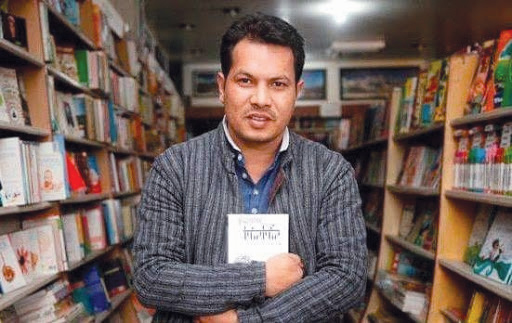 Buddhisagar Chapai is one of the most prolific writers of Nepal. Chapai initiated his literary journey writing gazals and poems at an early age of 13. Rara Jalepachi, Hazarau Prithvi Hazarau Aakash are some of his published collections of gazal and poetry while Karnali Blues and Phirphire are his celebrated novels. Chapai was also the winner of Rastriya Kavita Pratiyogita (National Poem Competition) and Rastriya Kavita Mahotsav (National Poem Festival) in 2001 and 2003 respectively.
Though he majored in journalism and worked as a journalist for five years, he wasn’t quite into staying in the office and writing news. It was a good platform for him to get his poetry published through and he liked that. Chapai could reach the masses easily by working in a newspaper. He used to spend most of his time in the literary section instead of political news. In his words, ‘journalism was just not for him, he had a different calling’.
It was a risk quitting the job and becoming a full-time writer. It was a hard decision to take but after the success of his novel Karnali Blues, it got easier. The sales hiked and he was earning more from the royalty than what he was earning from his job. That acted as a support in his decision of becoming a full-time writer.
Buddhisagar Chapai is one of the most prolific writers of Nepal. Chapai initiated his literary journey writing gazals and poems at an early age of 13. Rara Jalepachi, Hazarau Prithvi Hazarau Aakash are some of his published collections of gazal and poetry while Karnali Blues and Phirphire are his celebrated novels. Chapai was also the winner of Rastriya Kavita Pratiyogita (National Poem Competition) and Rastriya Kavita Mahotsav (National Poem Festival) in 2001 and 2003 respectively.
Though he majored in journalism and worked as a journalist for five years, he wasn’t quite into staying in the office and writing news. It was a good platform for him to get his poetry published through and he liked that. Chapai could reach the masses easily by working in a newspaper. He used to spend most of his time in the literary section instead of political news. In his words, ‘journalism was just not for him, he had a different calling’.
It was a risk quitting the job and becoming a full-time writer. It was a hard decision to take but after the success of his novel Karnali Blues, it got easier. The sales hiked and he was earning more from the royalty than what he was earning from his job. That acted as a support in his decision of becoming a full-time writer.
ANJALI LAMA
 Anjali Lama burst on to India’s fashion scene in 2017, when the transgender model from Nepal walked for Lakmé Fashion Week. Two years later, she bagged a campaign for Calvin Klein. What makes this remarkable is not just the fact that she has been signed for campaigns for international luxury houses, but that Lama, 35, is the first transgender model from the subcontinent (and among only a handful worldwide) to be featured in an international brand campaign.
Always drawn to the world of fashion and beauty, her friends encouraged her to be a model. Her first cover shoot for VOW magazine in Nepal perhaps marked the beginnings of her journey. But when she tried pursuing modelling in Nepal, opportunities were few and for transgender persons even fewer. She received countless rejections here despite having the quality and potential and the reason was her gender. She then moved to Mumbai.
In 2017, she auditioned for Lakmé Fashion Week, but it took three attempts over two seasons before she was finally included in its pool of models. Her ascent to fame in India was quick after: she has walked for designers such as Rajesh Pratap Singh, Gaurav Gupta and Raw Mango, appeared on the covers of Elle and L’Officiel, been featured in Harper’s Bazaar, Vogue, Grazia and Femina, is represented by the agency Feat. She also won the GQ award for Agent of Change 2018.
Anjali Lama burst on to India’s fashion scene in 2017, when the transgender model from Nepal walked for Lakmé Fashion Week. Two years later, she bagged a campaign for Calvin Klein. What makes this remarkable is not just the fact that she has been signed for campaigns for international luxury houses, but that Lama, 35, is the first transgender model from the subcontinent (and among only a handful worldwide) to be featured in an international brand campaign.
Always drawn to the world of fashion and beauty, her friends encouraged her to be a model. Her first cover shoot for VOW magazine in Nepal perhaps marked the beginnings of her journey. But when she tried pursuing modelling in Nepal, opportunities were few and for transgender persons even fewer. She received countless rejections here despite having the quality and potential and the reason was her gender. She then moved to Mumbai.
In 2017, she auditioned for Lakmé Fashion Week, but it took three attempts over two seasons before she was finally included in its pool of models. Her ascent to fame in India was quick after: she has walked for designers such as Rajesh Pratap Singh, Gaurav Gupta and Raw Mango, appeared on the covers of Elle and L’Officiel, been featured in Harper’s Bazaar, Vogue, Grazia and Femina, is represented by the agency Feat. She also won the GQ award for Agent of Change 2018.
UNIQUE POET
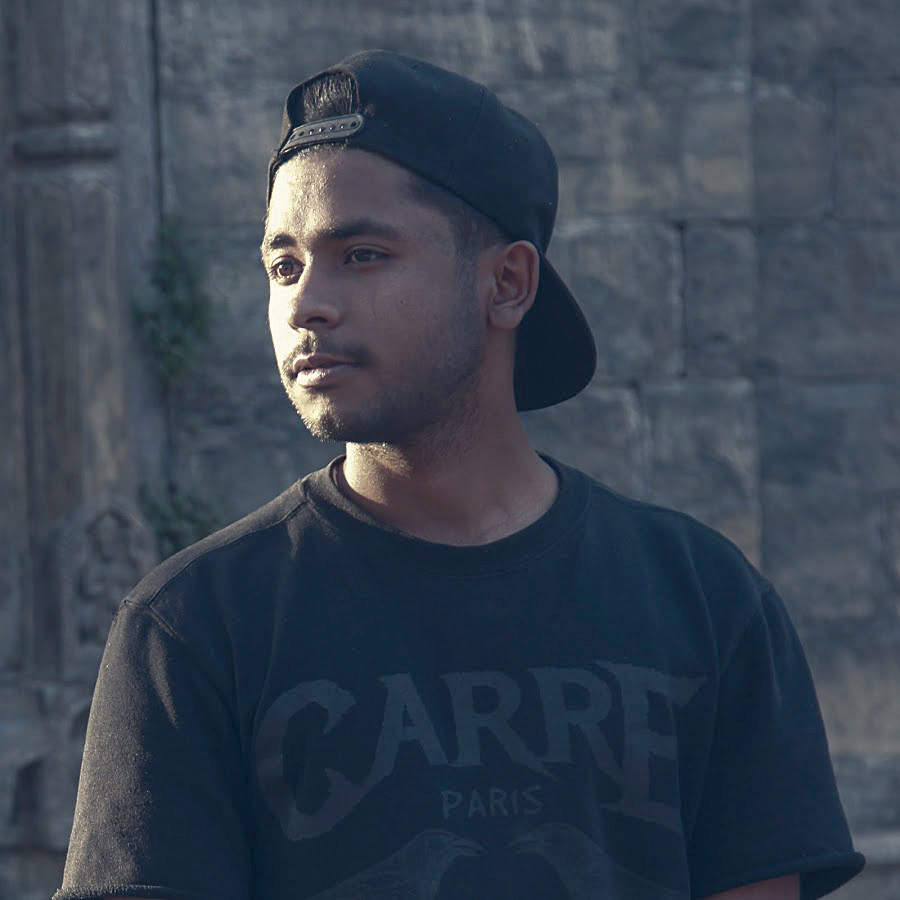 Uniq Poet is the stage name of Utsaha Joshi. When he participated in the Raw Barz event in 2013 and battled against Laure, the crowd favourite, not many would have anticipated that the rapper who was beaten would one day shoulder the fate of the hip hop scene in Nepal. His albums Kaalo and 1994 have catapulted his fame and established him as an artiste who means serious business. The rapper, lyricist and musician has collaborated with national and international artistes. His collaboration with Sacar, Rohit Shakya, Albatross, Neetesh Jung Kunwar have resulted into notable tracks. “Mero Desh Birami”, “Heaven”, “Kaam”, and propel the listeners to think. Uniq Poet owns a Silver Play Button and has more than 107K subscribers on his YouTube channel.
Uniq Poet is the stage name of Utsaha Joshi. When he participated in the Raw Barz event in 2013 and battled against Laure, the crowd favourite, not many would have anticipated that the rapper who was beaten would one day shoulder the fate of the hip hop scene in Nepal. His albums Kaalo and 1994 have catapulted his fame and established him as an artiste who means serious business. The rapper, lyricist and musician has collaborated with national and international artistes. His collaboration with Sacar, Rohit Shakya, Albatross, Neetesh Jung Kunwar have resulted into notable tracks. “Mero Desh Birami”, “Heaven”, “Kaam”, and propel the listeners to think. Uniq Poet owns a Silver Play Button and has more than 107K subscribers on his YouTube channel.
ROHIT SHAKYA
 Rohit Shakya wants to stamp his name on everything: producing songs, music composition, music collaboration, music videos and commercials, working with local artists and corporate giants like Coca Cola. He is a creative genius who has worked with Uniq Poet, Albatross, Astha Tamang Maskey, Trishala Gurung, Sajjan Raj Vaidya to name a few.
He is the co-founder, producer and director at Fuzz Factory Productions, a multimedia company. A business graduate, Shakya later earned a diploma in audio engineering from Bangkok. He is also the lead vocalist for Jindabaad, a rock band.
With Fuzzspace, a multimedia project under the company, the team travels to various places within the country and draws inspiration from the culture, people and the music from that place and also collaborates with the local artists to create tracks. The project was awarded the Contemporary Take, Beyond Cultural Heritage grant announced jointly by Prince Claus Fund and the British Council. The grant allowed them to travel to Bhojpur, Janakpur and Manan, featuring the hills, the Tarai and the mountains of Nepal. The team collaborated with young artists from the locations resulting into three documentaries and three music videos.
Rohit Shakya wants to stamp his name on everything: producing songs, music composition, music collaboration, music videos and commercials, working with local artists and corporate giants like Coca Cola. He is a creative genius who has worked with Uniq Poet, Albatross, Astha Tamang Maskey, Trishala Gurung, Sajjan Raj Vaidya to name a few.
He is the co-founder, producer and director at Fuzz Factory Productions, a multimedia company. A business graduate, Shakya later earned a diploma in audio engineering from Bangkok. He is also the lead vocalist for Jindabaad, a rock band.
With Fuzzspace, a multimedia project under the company, the team travels to various places within the country and draws inspiration from the culture, people and the music from that place and also collaborates with the local artists to create tracks. The project was awarded the Contemporary Take, Beyond Cultural Heritage grant announced jointly by Prince Claus Fund and the British Council. The grant allowed them to travel to Bhojpur, Janakpur and Manan, featuring the hills, the Tarai and the mountains of Nepal. The team collaborated with young artists from the locations resulting into three documentaries and three music videos.
MUNA GURUNG
 To honour her mother’s proficiency in making achar, Muna Gurung initiated a family business, Amako, which means ‘mother’s’. A writer, translator and educator, Gurung saw entrepreneurial opportunity to market the pickles hitherto consumed only by family members.
Gurung is an alumna of Columbia University from where she received her MFA. She is the founder of KathaSatha, an initiative that fosters writing and storytelling culture by creating and supporting writers and writings from Nepal. They offer customised writing workshops and mentorship programs for individuals and organisations. Besides, to add an interesting flavour to the existing book launch culture in Nepal, KathaSatha also curates literature related events such as literary dinners, book launches, public writing initiatives and performances.
Gurung is an old-hand at writing. Her non-fiction works include: “Not Your Mother’s Pickles,” published in Roads & Kingdoms, “Women Interventions: Women Translators on Women Writers They Dream of Translating,” in The Margins, “The Taste of Decay,”in La.Lit. Fiction she wrote are: “Hair” published in La.Lit, “Bardo” in The Margins, “The List” under “Homage to Nepal” in VelaMag (May 2015). She is the translator of “To Those Who Don’t Know Where Their Fathers Are” by Mallika Shakya, in La.Lit in 2017. She has also edited a few children’s books.
To honour her mother’s proficiency in making achar, Muna Gurung initiated a family business, Amako, which means ‘mother’s’. A writer, translator and educator, Gurung saw entrepreneurial opportunity to market the pickles hitherto consumed only by family members.
Gurung is an alumna of Columbia University from where she received her MFA. She is the founder of KathaSatha, an initiative that fosters writing and storytelling culture by creating and supporting writers and writings from Nepal. They offer customised writing workshops and mentorship programs for individuals and organisations. Besides, to add an interesting flavour to the existing book launch culture in Nepal, KathaSatha also curates literature related events such as literary dinners, book launches, public writing initiatives and performances.
Gurung is an old-hand at writing. Her non-fiction works include: “Not Your Mother’s Pickles,” published in Roads & Kingdoms, “Women Interventions: Women Translators on Women Writers They Dream of Translating,” in The Margins, “The Taste of Decay,”in La.Lit. Fiction she wrote are: “Hair” published in La.Lit, “Bardo” in The Margins, “The List” under “Homage to Nepal” in VelaMag (May 2015). She is the translator of “To Those Who Don’t Know Where Their Fathers Are” by Mallika Shakya, in La.Lit in 2017. She has also edited a few children’s books.
TASHI R GHALE
 A local from Manang, Ghale is a field biologist, wildlife photographer and entrepreneur. His lens is trained to capture the Himalayas, wildlife, social, culture and religious life of Manang. A local photographer turned citizen scientist, Ghale monitors snow leopards for Third Pole Conservancy.
He was the first to document camera-trap evidence of Pallas’s cats in Manang, which was supposed to be extinct. German naturalist Peter Simon Pallas first found it in Central Asia in 1776, therefore it bore his name. However, the Pallas cat did not have a Nepali name, so researchers named it Tashi Biralo.
For his contribution in snow leopard research and conservation through local conservation initiative and monitoring using non-invasive techniques - camera trapping, he was awarded Disney Conservation Hero Award 2018 from Disney Conservation Fund. He was also awarded with “Abraham Conservation Award 2016” by WWF Nepal for his remarkable contribution in snow leopard and other high-altitude wildlife documentation and conservation in the Himalayas in Nepal. His tireless work in snow leopard monitoring has earned him the title of the ‘Guardian of the Snow Leopards in Nepal’.
A local from Manang, Ghale is a field biologist, wildlife photographer and entrepreneur. His lens is trained to capture the Himalayas, wildlife, social, culture and religious life of Manang. A local photographer turned citizen scientist, Ghale monitors snow leopards for Third Pole Conservancy.
He was the first to document camera-trap evidence of Pallas’s cats in Manang, which was supposed to be extinct. German naturalist Peter Simon Pallas first found it in Central Asia in 1776, therefore it bore his name. However, the Pallas cat did not have a Nepali name, so researchers named it Tashi Biralo.
For his contribution in snow leopard research and conservation through local conservation initiative and monitoring using non-invasive techniques - camera trapping, he was awarded Disney Conservation Hero Award 2018 from Disney Conservation Fund. He was also awarded with “Abraham Conservation Award 2016” by WWF Nepal for his remarkable contribution in snow leopard and other high-altitude wildlife documentation and conservation in the Himalayas in Nepal. His tireless work in snow leopard monitoring has earned him the title of the ‘Guardian of the Snow Leopards in Nepal’.
Published Date: February 24, 2021, 12:00 am
Post Comment
E-Magazine
RELATED People To Watch


